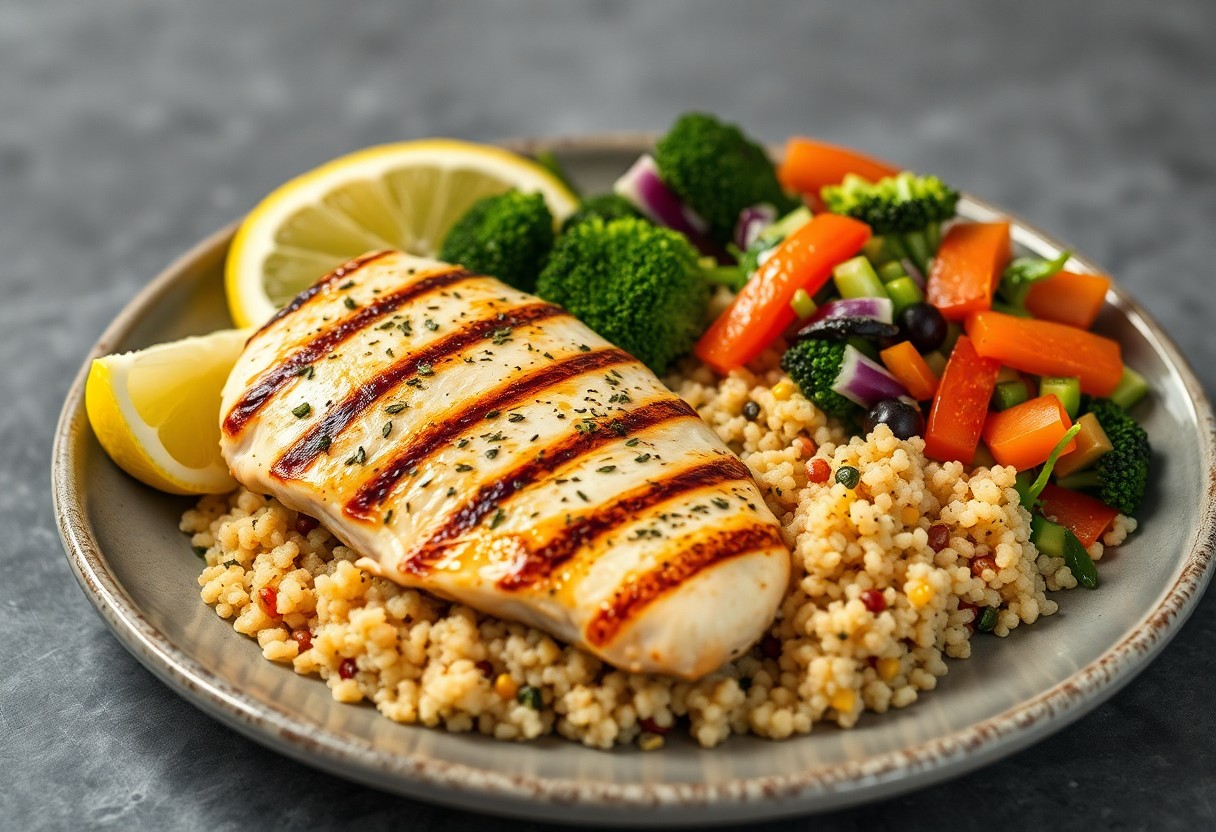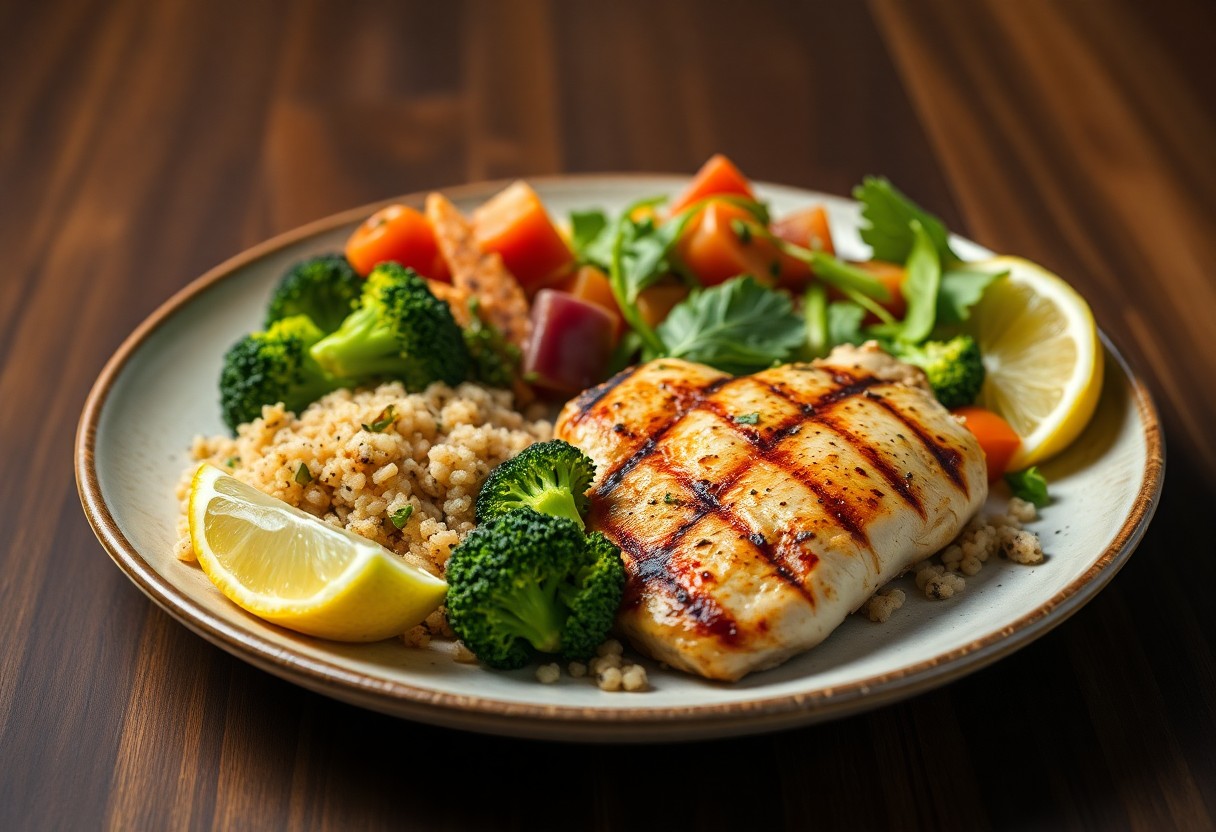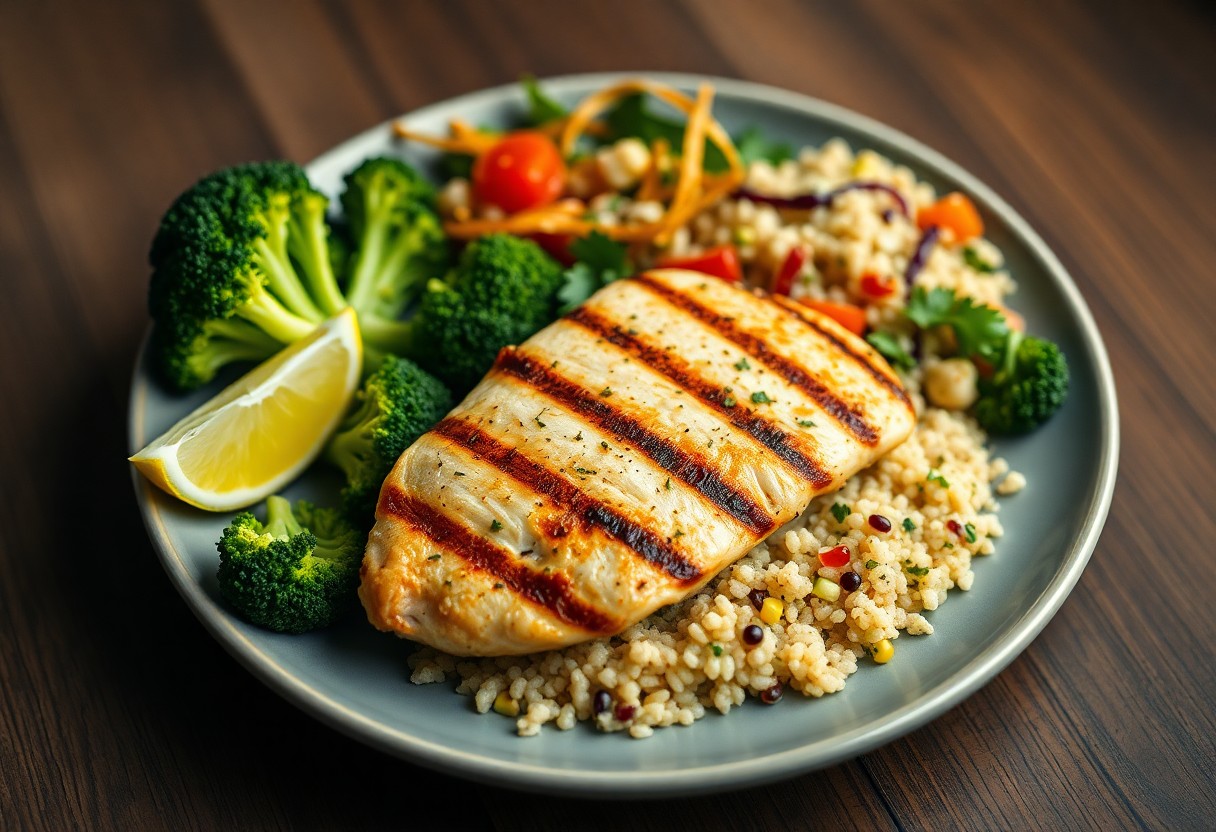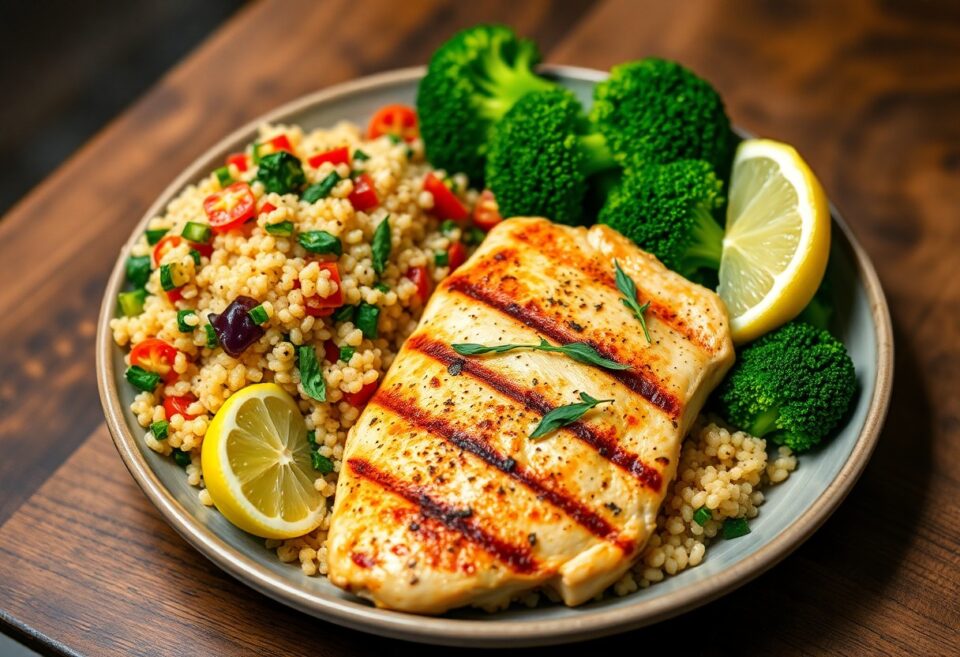With increasing awareness about nutrition, you might be looking for a simple but effective way to shed unwanted fat without sacrificing satisfaction in your meals. The Fat-Fighting Diet: 500-Calorie Dinners offers you an easy-to-follow strategy to help manage your calorie intake while still enjoying flavorful, nutrient-packed dinners. By focusing on low-calorie, high-nutrient meals, you can support your metabolism and reduce excess body fat. This approach empowers you to take control of your eating habits and make sustainable changes for long-term health benefits.
The Science of Satiety: How 500 Calories Can Satisfy
Fitting your dinner into 500 calories might sound restrictive, but understanding how satiety works can change how you approach meal planning. Your body’s feeling of fullness hinges on signals from various physiological mechanisms, including hormone release and stomach distension. Meals that carefully incorporate nutrient-dense ingredients can send strong satiety cues, helping you avoid post-dinner snacking and unnecessary calorie intake. For example, foods with a low energy density, such as vegetables and lean proteins, allow you to consume larger portions that take up more space in your stomach, effectively signaling fullness to your brain despite the modest calorie count.
Another key factor lies in the timing and composition of your meals. Eating a 500-calorie dinner balanced with the right macronutrients isn’t just about calorie counting—it’s about how these calories affect hunger hormones like ghrelin and peptide YY. Studies show that meals higher in protein and fiber reduce ghrelin levels, which is the hormone that stimulates appetite. This hormonal effect means you can stay comfortably satisfied for longer periods after your evening meal, making it easier to adhere to your fat-fighting diet.
Understanding Macronutrient Balance in Dinners
Balancing carbohydrates, proteins, and fats in your dinner can dramatically influence how satisfied you feel after eating. Proteins, often hailed as the most satiating macronutrient, stimulate the release of appetite-suppressing hormones and contribute to muscle repair overnight. A dinner composed of approximately 30-40% protein can promote fullness and help maintain muscle mass during fat loss. Meanwhile, complex carbohydrates, accounting for about 30-50% of your meal, provide a steady energy release while minimizing blood sugar spikes that often lead to cravings.
Fats play a nuanced role; a moderate amount—around 20-30% of your plate—can slow digestion and prolong the feeling of fullness. Healthy fats such as those found in avocados, nuts, and olive oil not only enhance satiety but also support necessary bodily functions and nutrient absorption. Ignoring the balance among these macronutrients could leave you feeling hungry and less likely to stick with your diet, even if the calorie count stays within your target.
The Role of Fiber and Protein in Maintaining Fullness
Fiber’s ability to slow gastric emptying means food stays in your stomach longer, extending the sensation of fullness well beyond the meal itself. Incorporating fiber-rich foods like leafy greens, beans, and whole grains into your 500-calorie dinner ensures that you aren’t just cutting calories but eating smartly to stay satisfied. Meanwhile, protein influences satiety through multiple pathways, including stimulating anorexigenic hormones that reduce hunger and promoting thermogenesis, which slightly increases calorie burn after eating.
Combining fiber and protein creates a powerful synergy that combats hunger more effectively than either nutrient alone. For instance, a meal containing grilled chicken breast with a side of sautéed kale and quinoa will keep hunger at bay better than an equivalent-calorie meal composed mainly of refined carbohydrates. This strategic pairing helps prevent overeating later in the evening, aligning perfectly with your fat-fighting goals.
More about The Role of Fiber and Protein in Maintaining Fullness: Research specifies that dietary fiber, particularly soluble fiber, forms a gel-like substance in the gut that not only slows digestion but also moderates glucose absorption, stabilizing blood sugar levels. This process minimizes the rapid hunger rebound often triggered by high-glycemic meals. Simultaneously, protein triggers the release of several satiety hormones – glucagon-like peptide-1 (GLP-1), peptide YY (PYY), and cholecystokinin (CCK) – which collectively suppress appetite for hours after your meal. Targeting these mechanisms in your 500-calorie dinner can drastically reduce evening snacking, often the biggest hurdle in fat loss regimens.

Flavor Without Guilt: Crafting Delicious Low-Calorie Meals
Satisfying your taste buds while keeping dinners under 500 calories is entirely achievable by focusing on bold, fresh flavors and smart ingredient choices. You don’t need to sacrifice taste to maintain your calorie goals. Instead, integrating vibrant herbs, spices, and citrus can magically transform simple dishes into memorable meals. For instance, a sprinkle of smoked paprika or a squeeze of fresh lime juice can elevate the natural flavors of lean proteins and vegetables, making every bite exciting.
Balancing textures also plays a significant role in creating pleasurable meals. Incorporating crunchy elements like toasted nuts or seeds alongside velvety purees or lightly steamed greens adds intrigue without adding many calories. These thoughtful pairings keep your palate entertained while respecting your calorie limits, effectively turning your 500-calorie dinners into indulgent yet health-conscious experiences.
Key Ingredients That Elevate Taste While Minimizing Calories
Incorporating ingredients such as fresh herbs—think cilantro, basil, or dill—brings an aromatic punch without adding calories or fat. Spices like cumin, turmeric, and coriander not only enhance flavor but also offer anti-inflammatory benefits that support your fat-fighting goals. Mustard, vinegar varieties (apple cider, balsamic), and low-sodium soy sauce can provide tang and umami depth, substituting heavy sauces or dressings that typically increase calorie counts.
Vegetables with naturally high water content, such as cucumbers, zucchini, and tomatoes, add bulk and hydration while keeping calories low. Mushrooms, perfect for their meaty texture and ability to absorb surrounding flavors, serve as excellent calorie-conscious replacements for richer ingredients. Including these elements regularly enriches your dishes, allowing you to relish every mouthful without guilt.
Cooking Techniques to Enhance Flavor Without Extra Calories
Grilling, roasting, and steaming are among the best techniques to concentrate flavors without adding fat. Grilling imparts a smoky char that deepens taste complexity, often enough to bypass the need for heavy seasonings. Roasting caramelizes natural sugars in vegetables, enhancing sweetness and creating satisfying textures. Steaming preserves the integrity and freshness of ingredients, enabling their inherent flavors to shine through.
Using techniques like sautéing with a splash of broth or water instead of oil cuts calories drastically while still allowing you to achieve a satisfying sear. You can also rely on slow cooking methods, where prolonged low heat amplifies flavor development, making lean meats tender and infusing herbs and spices deeply. These approaches elevate your meals without piling on extra fats or calories.
Dabbling in flavor layering during cooking unlocks a depth often missed in low-calorie dishes. For example, toasting whole spices before grinding releases important oils that enrich your dish’s aroma and taste more intensely than ground spices alone. Deglazing pans with wine or broth captures caramelized bits, injecting savory notes without adding oil or butter. Mastering such techniques ensures every calorie you consume works hard to reward your palate.
Meal Planning Mastery: Strategies for Successful 500-Calorie Dinners
Building a Versatile Weekly Menu
Designing a weekly menu with 500-calorie dinners challenges you to balance variety with nutritional adequacy. Emphasizing a mix of lean proteins, vegetables, and whole grains creates meals that satisfy without tipping calorie limits. For instance, alternating grilled salmon with roasted vegetables one night and turkey stir-fry with brown rice another not only keeps your palate interested but also provides a broad spectrum of nutrients. This approach helps prevent diet fatigue while maintaining steady progress toward your fat-burning goals.
Utilizing resources like My 14 favourite low-calorie dinners can jumpstart your creativity in the kitchen. By drawing inspiration from tried-and-true recipes tailored for calorie control, you ensure your weekly plan is both flavorful and efficient. Integrating diverse cuisines and cooking methods empowers you to enjoy your food while adhering strictly to your target calorie count.
Smart Shopping Tips for Healthy Selection
Shopping with your 500-calorie dinner goal in mind changes the way you approach the grocery store. Prioritize nutrient-dense items over calorie-heavy processed foods. Lean meats like chicken breast, fish, or plant-based proteins such as lentils and chickpeas become staples, while fresh vegetables should dominate your cart. Avoiding the center aisles packed with refined carbs and sugary snacks reduces temptation and simplifies meal preparation. Investing in quality ingredients directly impacts the success of your fat-fighting dinners.
Planning your shopping list around seasonally available produce also optimizes both cost and flavor. Seasonal vegetables and fruits boast higher nutrient content and lower prices, making it easier to stay within budget without sacrificing quality. Frozen options can also be excellent alternatives when fresh items are unavailable. They maintain nutritional value, extend shelf life, and enhance convenience for quick meal assembly.
Additional insights for selecting ingredients include:
- Choose whole grains like quinoa, barley, or brown rice over refined options to boost fiber intake.
- Opt for fresh or frozen vegetables to ensure maximum vitamins and minerals.
- Pick lean protein sources: fish rich in omega-3s or plant-based proteins to maintain nutritional balance.
- Limit added oils and high-calorie dressings to keep dinner within the 500-calorie limit.
- Thou should also monitor portion sizes to control overall calorie consumption effectively.

Beyond the Plate: Lifestyle Factors That Influence Weight Loss
While maintaining a 500-calorie dinner is an effective step toward fat loss, the full picture involves a blend of lifestyle factors that can either accelerate or hinder your progress. For instance, physical activity outside of meals increases your daily energy expenditure, helping to create a calorie deficit without the need to drastically cut portions. Furthermore, habits like hydration, regular movement breaks, and even exposure to natural light throughout the day subtly influence your metabolism and overall energy balance.
Incorporating habits that support digestion and nutrient absorption can also optimize the outcomes of your fat-fighting diet. Foods rich in fiber and protein, combined with good hydration, help stabilize blood sugar and prolong satiety. Assume that dialing in these complementary lifestyle factors alongside your controlled dinners will empower you to reach your weight loss goals more efficiently than diet alone.
The Impact of Mindful Eating on Caloric Intake
Mindful eating encourages you to focus fully on the experience of eating—acknowledging hunger cues, savoring each bite, and recognizing fullness signals. Studies have shown that this practice can reduce the tendency to overeat by allowing you to slow down and assess whether you truly need more food. For instance, one randomized trial demonstrated that participants practicing mindful eating reduced their caloric intake by approximately 20% without consciously dieting.
By tuning into the nuances of aroma, taste, and texture, you can prevent the distraction-driven overeating that so commonly undermines calorie-controlled diets. Trying to eat without distractions such as screens or multitasking allows your brain enough time to register satiety, which typically takes about 20 minutes. Assume that adopting mindful eating techniques will make your 500-calorie dinners feel more satisfying and prevent unnecessary snacking after the meal.
How Sleep and Stress Management Affect Metabolism
Sleep quality substantially impacts your body’s ability to burn fat. Chronic sleep deprivation has been linked to a decrease in leptin—your body’s satiety hormone—and an increase in ghrelin, which stimulates appetite. Research indicates that individuals who sleep fewer than six hours per night tend to consume an additional 300 calories daily, complicating efforts to maintain low-calorie dinners. Additionally, stress triggers the release of cortisol, a hormone that encourages fat storage, particularly around the abdominal area.
Effective stress management techniques such as meditation, deep breathing, or even light physical activity engage your parasympathetic nervous system, reducing cortisol output. Balancing this hormonal response is key to optimizing your metabolic rate and preserving lean muscle, which is metabolically active tissue critical for burning calories at rest. Assume that prioritizing consistent sleep and stress reduction can enhance the fat-burning results of your calorie-controlled meals.
In addition, poor sleep and elevated stress levels may impair insulin sensitivity, promoting fat accumulation and making weight loss more difficult. Regularly achieving 7 to 9 hours of uninterrupted sleep supports hormonal balance and metabolic flexibility, allowing your body to switch between burning carbohydrates and fats efficiently. Incorporating practices like establishing a calming bedtime routine or managing workloads to reduce daily stress can create a hormonal environment that complements your dietary efforts for sustained fat loss.

Real-Life Success Stories: Transformations Through Diet
Inspirational Weight Loss Journeys Fueled by 500-Calorie Dinners
One striking example comes from Sarah, who lost 35 pounds over four months by consistently incorporating 500-calorie dinners into her routine. She combined this approach with moderate morning workouts and found that ending the day with a controlled, nourishing meal helped curb late-night snacking. Rather than feeling deprived, Sarah described her dinners as “creative and satisfying,” utilizing lean proteins and plenty of vegetables to stay within the calorie limit but still feel full.
Similarly, James managed to drop from 220 to 180 pounds in just six months by focusing on 500-calorie nighttime meals paired with mindful hydration throughout the day. He reported significant improvements in his energy levels and sleep quality. In his case, the key was not just the calorie count but also the consistent timing of his dinners, which helped regulate his metabolism and reduced impulsive eating behaviors during the evening.
Lessons Learned from Those Who’ve Achieved Lasting Change
Many who have successfully maintained their weight loss emphasize the power of simplicity and sustainability in their meal planning. You don’t need complicated recipes or expensive ingredients—what matters most is balancing nutrients within that 500-calorie framework. Individuals note that having a few go-to dinner options helped avoid decision fatigue and kept them on track even after stressful days.
Integrating 500-calorie dinners into your lifestyle also demands patience and flexibility. Some days will be easier than others, and allowing yourself a small indulgence occasionally prevents burnout. People often highlight the importance of pairing these dinners with an overall mindful eating approach, focusing on hunger cues instead of rigid calorie counting every single day.
Beyond meal composition, consistent reflection on what works best for your body plays a big role in ensuring long-term success. Adapting your 500-calorie dinners by adjusting portion sizes or meal timing based on your activity level and progress keeps your metabolism responsive and stops plateaus. This dynamic approach contrasts with rigid dieting and opens the door for you to develop a healthy relationship with food that supports both weight management and overall well-being.
Final Words
On the whole, embracing The Fat-Fighting Diet: 500-Calorie Dinners offers you a practical and effective way to manage your calorie intake without sacrificing flavor or satisfaction. By focusing on balanced, nutrient-rich meals that keep you within a 500-calorie limit, you create a sustainable approach to weight control that fits into your daily routine. This strategy not only helps you reduce excess body fat but also supports your overall health by encouraging mindful eating and portion awareness.
You have the opportunity to take control of your eating habits with confidence, knowing that each dinner choice fuels your body wisely while assisting your fat-loss goals. Staying consistent with this method allows you to build positive mealtime habits that can transform your relationship with food and lead to long-term success. The Fat-Fighting Diet empowers you to make smarter dinner decisions that contribute to a healthier lifestyle without feeling deprived.
FAQ
Q: What is the main concept behind “The Fat-Fighting Diet: 500-Calorie Dinners”?
A: The diet focuses on limiting dinner meals to around 500 calories to help reduce overall daily calorie intake. This approach encourages healthier eating habits by prioritizing portion control and nutrient-dense foods during the evening meal, which can contribute to weight loss and improved metabolic health.
Q: Are 500-calorie dinners nutritionally sufficient for a balanced diet?
A: Yes, when planned properly, a 500-calorie dinner can include a balance of proteins, healthy fats, and carbohydrates along with vegetables or fiber-rich foods. The diet emphasizes nutrient-dense ingredients over empty calories to ensure that meals support overall health while keeping caloric intake in check.
Q: Can “The Fat-Fighting Diet” be combined with other meal plans or is it strictly limited to dinner?
A: While the diet specifically targets reducing dinner calorie intake to 500, it can be combined with various healthy eating approaches for breakfast and lunch. The key is to maintain a balanced total daily calorie goal and incorporate nutrient-rich foods throughout the day to maximize health benefits.
Q: Is this diet suitable for people with certain medical conditions or dietary restrictions?
A: Individuals with medical conditions or specific dietary needs should consult with a healthcare provider or registered dietitian before starting this diet. Adjustments may be necessary to accommodate conditions like diabetes, kidney issues, or nutrient deficiencies to ensure safe and effective implementation.
Q: What are some examples of 500-calorie dinners recommended in this diet?
A: Typical meals include grilled lean proteins such as chicken or fish paired with steamed vegetables and a small portion of whole grains like quinoa or brown rice. Salads with a variety of fresh vegetables, legumes, and a light dressing are also common options. The diet encourages the use of herbs and spices for flavor instead of calorie-heavy sauces.
Q: How does eating a 500-calorie dinner aid in fat loss compared to other meal strategies?
A: Restricting dinner calories to 500 helps create a calorie deficit, which is vital for fat loss. Since dinner is often the largest meal for many people, reducing its calorie content while maintaining nutrient quality can decrease overall caloric intake without causing extreme hunger or nutrient deprivation.
Q: Are snacks allowed on “The Fat-Fighting Diet” when following 500-calorie dinners?
A: The diet can accommodate healthy snacks as long as they fit within the individual’s total daily calorie goals. Choosing nutrient-dense, low-calorie snacks like fruits, vegetables, or a small portion of nuts can keep hunger at bay and support the fat-loss goals without exceeding calorie limits.
